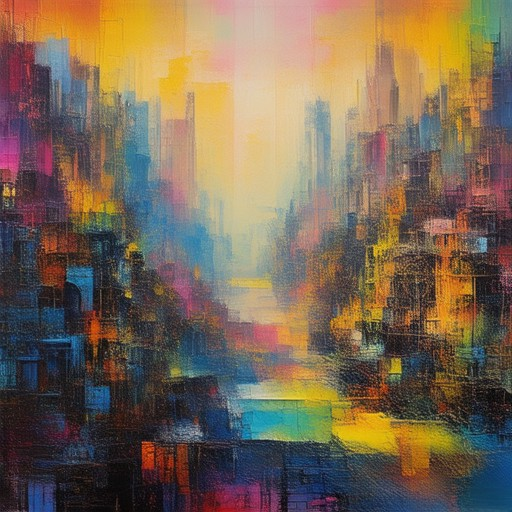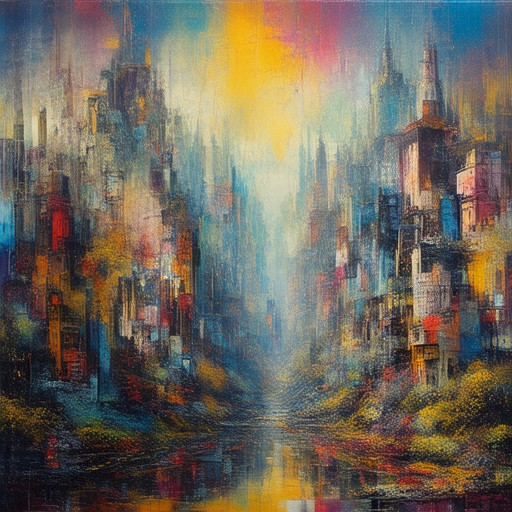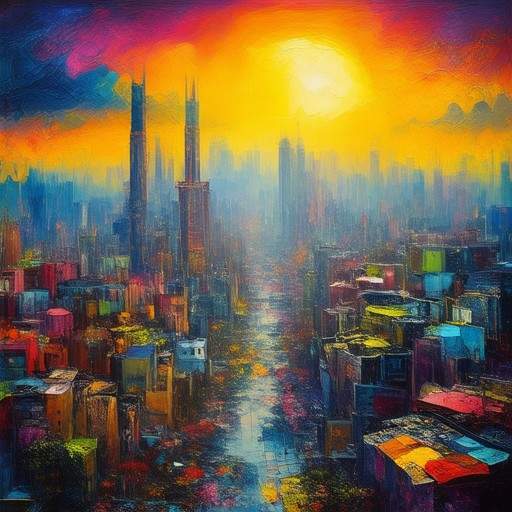Exploring Art Culture and History: A Journey Through West Virginia’s Cultural Heritage and Career Insights
Key Takeaways
– Understanding the Challenges of Achieving an A*: Balancing creativity, technical skills, time management, and syllabus understanding can help students aim for top grades, with 12% of students achieving grades 8 or 9.
– Pursuing Advanced Art Degrees: The Master of Fine Arts (MFA) is the highest terminal degree, offering advanced techniques, professional development, and networking opportunities.
– GPA Considerations for Art School: Aim for a GPA between 3.3 to 3.9, though portfolios and recommendations are equally crucial. Engage in art clubs and relevant electives to strengthen your application.
– Career Opportunities in Art: Skilled artists are in demand across various sectors, with cultural awareness enhancing career prospects. Explore diverse roles in education, galleries, and more.

How Is Art and Culture Related to History?
Art and culture are deeply intertwined with history, serving as mirrors of societal evolution and human expression. Here’s how they are connected:
1. Art as Historical Documentation
- Art acts as a historical record, offering insights into the values, beliefs, and daily life of past societies.
- Paintings, sculptures, and artifacts often capture significant events, figures, and cultural shifts.
- Artists frequently depict the zeitgeist, making their work a reflection of the era they lived in.
2. Cultural Influences on Artistic Expression
- Culture shapes the creation and interpretation of art, determining which themes and styles gain prominence.
- Different cultures may interpret the same subject matter differently, leading to diverse artistic expressions.
- Artistic movements often emerge from cultural shifts, such as the Renaissance reflecting the revival of classical knowledge.
3. History Shaping Art and Culture
- Historical events, political changes, and technological advancements influence both art and culture.
- Wars, discoveries, and social movements leave lasting impacts on artistic styles and cultural practices.
- These influences can be seen in architecture, literature, music, and visual arts.
4. Preserving Cultural Heritage Through Art
- Art serves as a medium for preserving cultural traditions, stories, and practices.
- Museums, galleries, and cultural institutions play crucial roles in safeguarding and showcasing historical artifacts.
- Art can also revitalize dying traditions, ensuring their survival for future generations.
5. Art Reflecting and Shaping Identity
- Art often reflects the identity of a culture or community, expressing shared values and experiences.
- Cultural identity is frequently expressed through traditional art forms, festivals, and symbols.
- Art can also challenge or redefine cultural norms, fostering change and innovation.
6. The Role of Art in Cultural Exchange
- Art facilitates cultural exchange, allowing ideas and perspectives to cross boundaries.
- International art exhibitions, collaborations, and movements promote global cultural understanding.
- Art can bridge gaps between cultures, fostering empathy and mutual respect.
By exploring the connections between art, culture, and history, we gain deeper insights into the shared human experience. This relationship continues to evolve, shaping and being shaped by the world we live in today.
Is it hard to get a 5 on AP Art History?
The AP Art History exam is known for its difficulty, particularly when aiming for the highest score of 5. According to recent data, approximately 11.9% of test-takers receive a perfect score, indicating that consistent exceptional performance is required. Here’s a breakdown of what contributes to this challenge:
Why is AP Art History Hard?
- Broad Content Scope : The exam covers a vast range of art historical periods, styles, and artists, requiring extensive knowledge across multiple eras and cultures.
- Subjective Interpretation : Artwork analysis involves personal interpretation, making it difficult to arrive at a universally agreed-upon conclusion.
- High Expectations : A score of 5 demands meticulous attention to detail, precise historical context understanding, and the ability to articulate complex ideas clearly.
Strategies for Success
To improve your chances of scoring highly, consider the following approaches:- Focus on Key Artists and Movements : Prioritize studying major figures and their contributions.- Practice Essay Writing : Develop strong analytical and expository writing skills.- Utilize Study Guides : Resources like those from Artful Journey can provide structured preparation tools.- Stay Consistent : Regular practice and review are essential to building the retention and critical thinking needed for success.
While the challenges are significant, with dedication and strategic preparation, many students achieve high scores. Remember, the effort invested now can lead to impressive results.

Jobs You Can Pursue with an Art History Degree
With a degree in art history, you open yourself up to a variety of fulfilling career paths that blend your passion for art and its historical context. Here are some notable options:
- Museum Educator:** Design and deliver educational programs, exhibits, and workshops to engage visitors and promote art appreciation.
- Curator:** Organize and manage art collections, curate exhibitions, and conduct research to acquire new works for institutions.
- Conservator:** Preserve and restore artworks, ensuring their longevity for future generations.
- Cultural Institution Administrator:** Work in cultural centers, historical societies, or similar organizations to manage operations and programs.
- Art Consultant:** Advise individuals, corporations, or institutions on acquiring and managing art collections.
- Art Historian:** Conduct research, publish writings, and contribute to academic or public discussions on art topics.
- Digital Content Creator:** Develop art history content for online platforms, blogs, or educational websites.
- Teacher/Educator:** Teach art history at various levels, from elementary to higher education.
- Nonprofit Program Manager:** Lead art-related initiatives, events, or fundraising efforts for charitable organizations.
- Auction House Specialist:** Work with auction houses to catalog, research, and sell fine art and collectibles.
- Corporate Art Advisor:** Help businesses acquire and display art within their spaces, often focusing on workplace aesthetics.
- Public Speaker:** Give tours, lectures, or presentations on art history topics for diverse audiences.
- Event Planner:** Organize art fairs, gallery openings, or cultural events to bring the community together.
These careers leverage your expertise in art history, offering opportunities to work in museums, galleries, cultural organizations, and beyond. Consider exploring internships or further education to enhance your credentials and open more doors in this dynamic field.
For more insights and resources on navigating your art history career, visit Artful Journey .

How Hard Is It to Get an A* in Level Art?
To determine how hard it is to achieve an A* in Level Art, consider several factors:
- Creativity and Originality: A* requires exceptional creativity and originality. Students must experiment with different techniques, styles, and mediums to stand out.
- Technical Skills: Proficiency in drawing, painting, and other art techniques is essential. This often demands significant practice and dedication.
- Time Management: Art projects can be time-consuming, making it challenging to balance with other academic responsibilities.
- Syllabus Understanding: Thoroughly understanding the syllabus and assessment criteria helps students prepare effectively, reducing unexpected challenges.
- Motivation and Resilience: Achieving a top grade demands persistence and the ability to handle criticism and setbacks.
While the journey to an A* is demanding, many students successfully navigate it with consistent effort and guidance. According to recent data, approximately 12% of students achieve grades 8 or 9, indicating that top grades are attainable with dedication.
For further insights and tips, explore resources like Artful Journey , which provides valuable guidance on mastering Level Art and other art-related subjects.
What is the Highest Degree You Can Get in Art?
The highest degree you can achieve in art is typically the Master of Fine Arts (MFA), which is considered a terminal degree. This means it is the final educational achievement in fine arts and performing arts disciplines.
Understanding the MFA
An MFA program focuses on advanced artistic practice, research, and creative development. Students often engage in studio-based projects, theoretical studies, and interdisciplinary approaches to refine their skills and contribute to the art world.
Benefits of Pursuing an MFA
- Advanced Techniques: Students gain expertise in specialized areas like painting, sculpture, photography, or digital media.
- Professional Development: MFAs prepare artists for careers in galleries, museums, and art schools.
- Networking Opportunities: Interacting with peers and faculty can lead to valuable professional connections.
Alternative Paths in Art Education
While the MFA is the most common terminal degree, some artists pursue alternative routes such as:
- Doctorate in Philosophy (PhD): Though less common, PhDs in art history or theory can offer academic and research-focused opportunities.
- Certifications and Residencies: Some artists choose specialized programs or residencies offered by institutions like Artful Day to further their craft.
Choosing the Right Path
Whether you opt for an MFA, PhD, or alternative programs, it’s essential to align your choice with your career goals and passion. Consider visiting platforms like Artful Journey to explore resources and insights for artists at all levels.
By pursuing these advanced degrees and opportunities, you can unlock new creative possibilities and advance your artistic practice to its full potential.

What is a Good GPA for Art School?
Admissions committees for art schools generally look for a GPA between 3.3 to 3.9 . This range reflects a strong academic foundation and demonstrates the ability to excel in demanding artistic and intellectual environments. However, the exact requirements can vary depending on the institution and the specific program you’re applying to.
Some art schools may place greater emphasis on the portfolio or personal statement rather than GPA alone, but a solid GPA still signals a candidate’s readiness for the challenges of art school. Here are some additional considerations:
- Curriculum Rigor: The difficulty of your high school coursework can also play a role. A GPA of 3.3 might be acceptable if you’ve taken challenging classes, while a GPA of 3.9 suggests you’ve excelled in a more rigorous academic environment.
- Art Portfolio: While GPA is important, many art schools heavily weigh the quality and originality of your portfolio. Consider taking advanced art classes or participating in art competitions to build a strong portfolio.
- Letters of Recommendation: Strong recommendations from teachers or professionals in the art field can significantly enhance your application, regardless of your GPA.
To further improve your chances, consider:
- Joining Art Clubs: Engage in extracurricular activities related to art, such as student art clubs or volunteer opportunities in the arts.
- Taking Relevant Electives: Enroll in courses that align with your artistic interests, whether they are offered in your school district or through online platforms.
Remember, every artist’s journey is unique. What matters most is your passion, dedication, and the effort you put into your artwork. With the right preparation and a strong application, you can succeed in art school regardless of your GPA, though a competitive GPA will certainly give you an edge.
For more tips on preparing for art school, explore our resources and discover how to create a standout application that showcases your talents effectively.




0 Comments